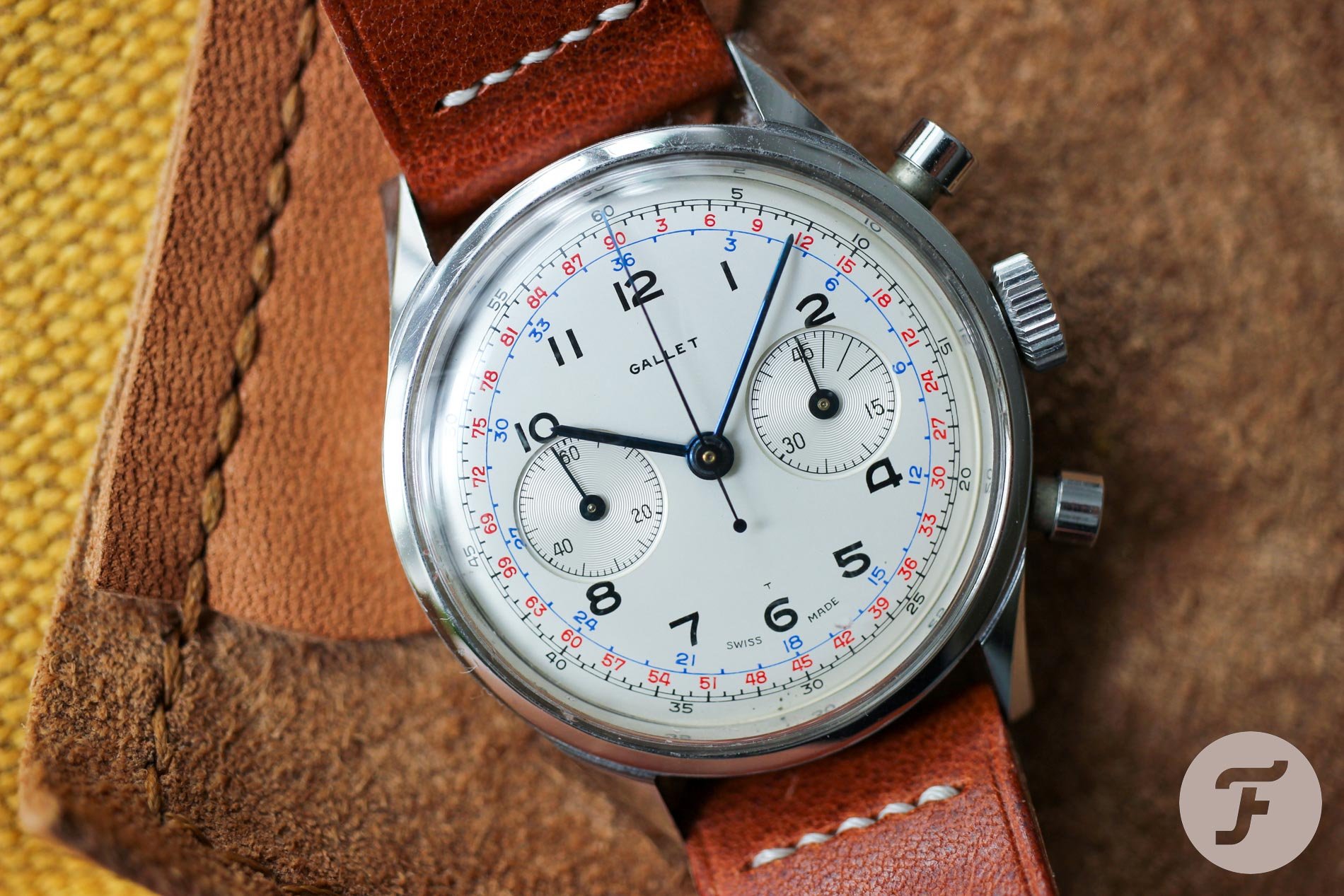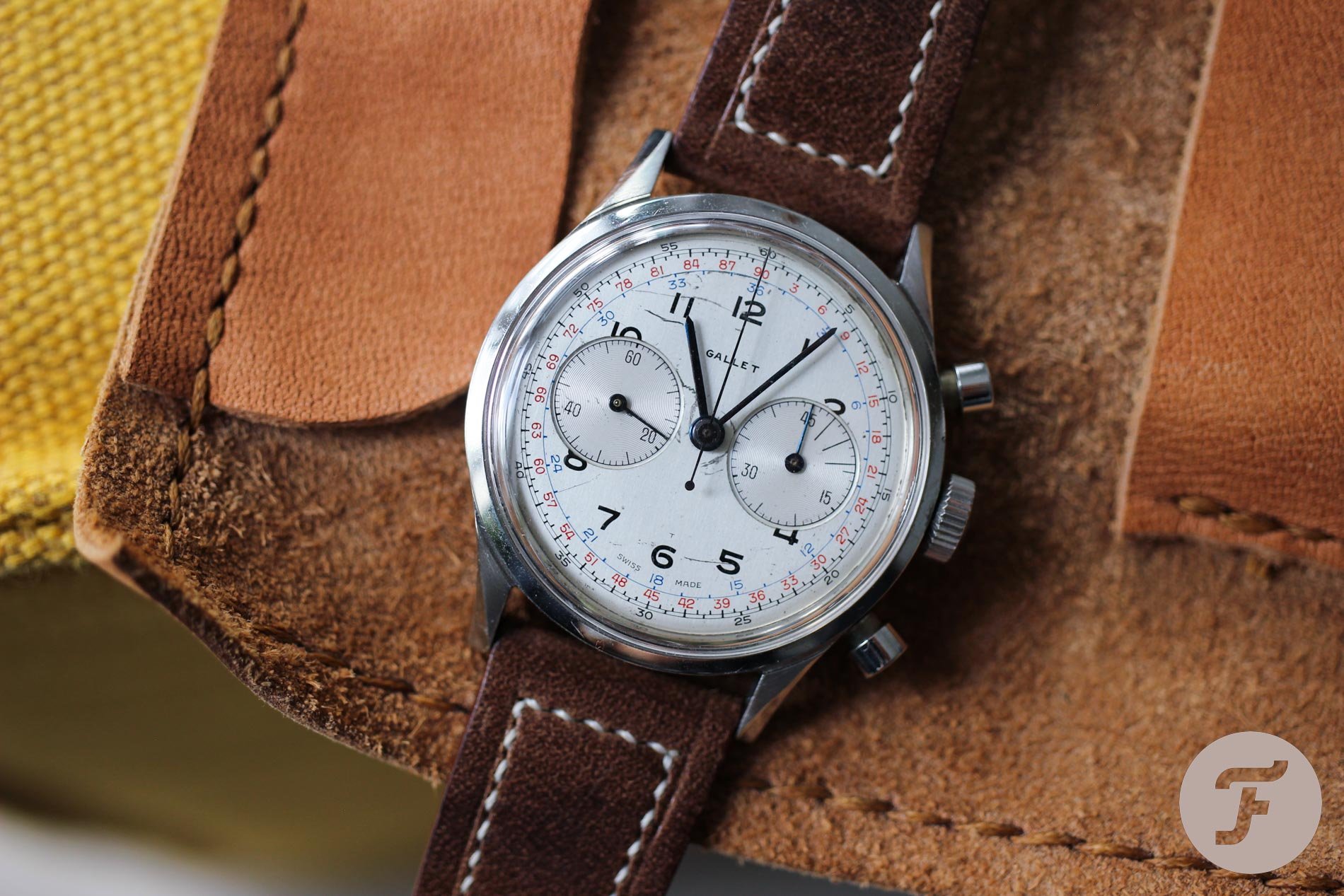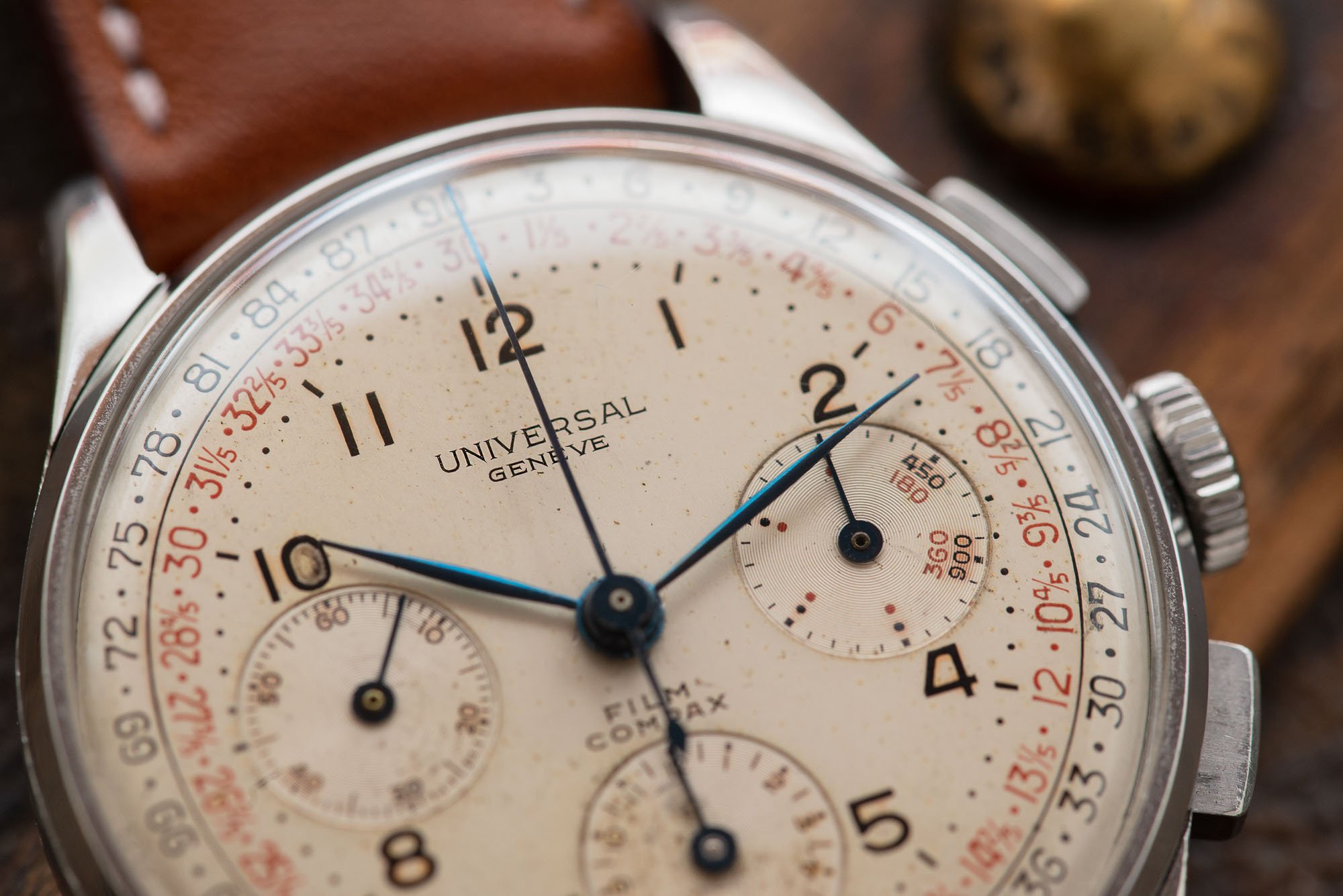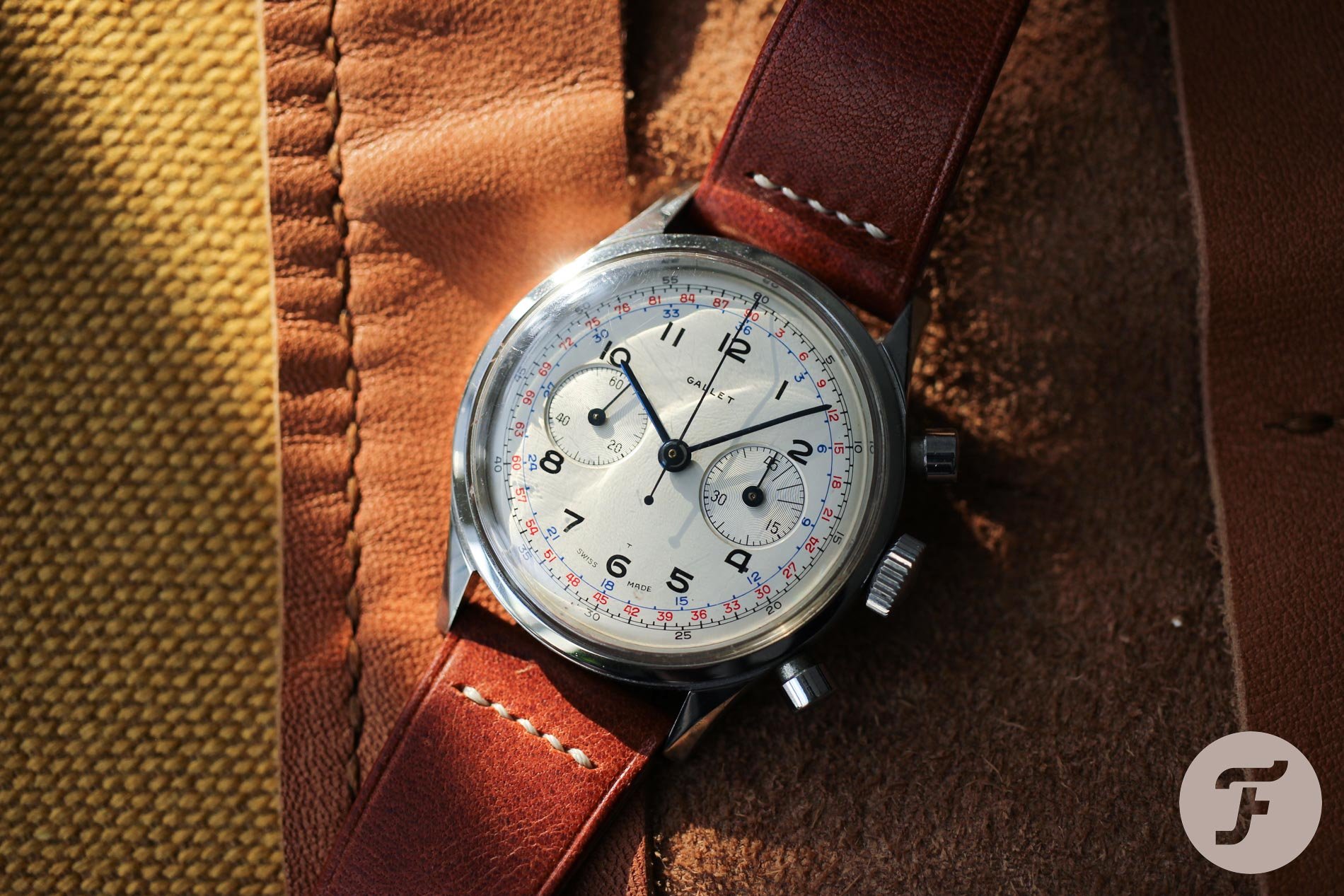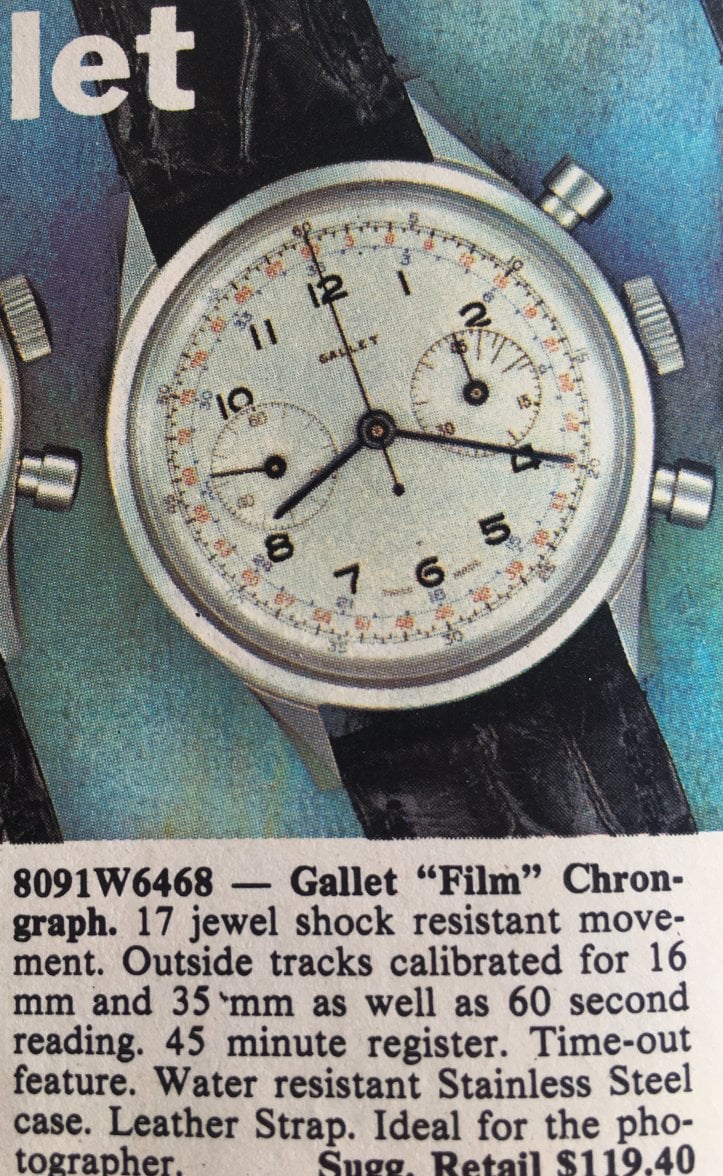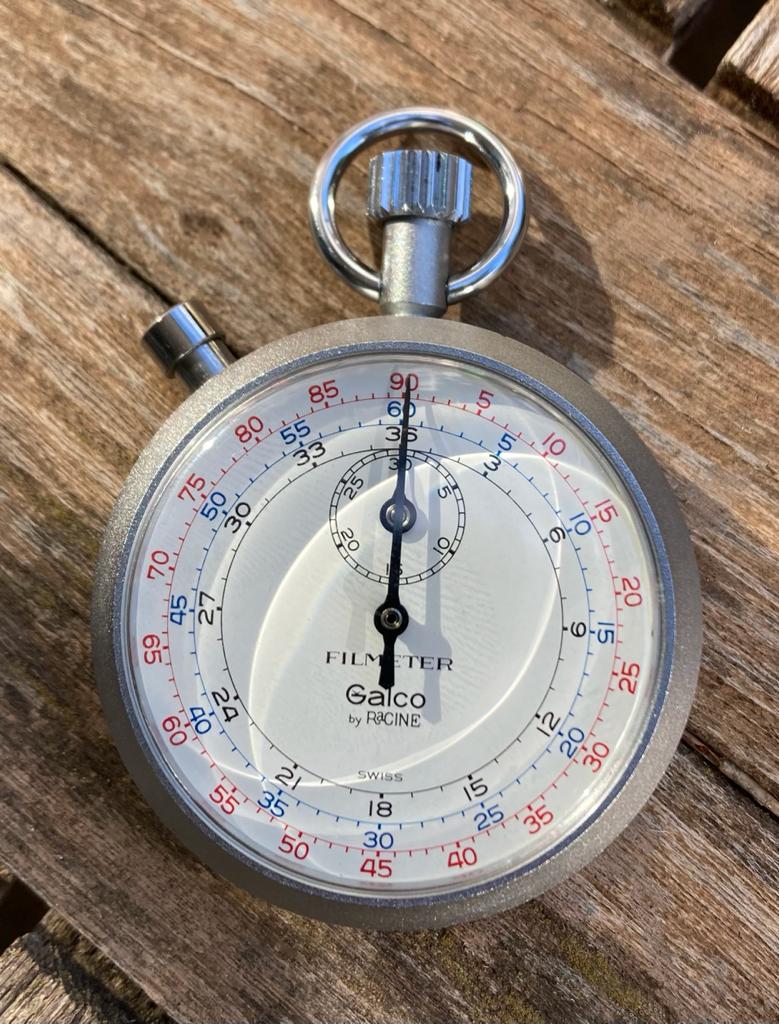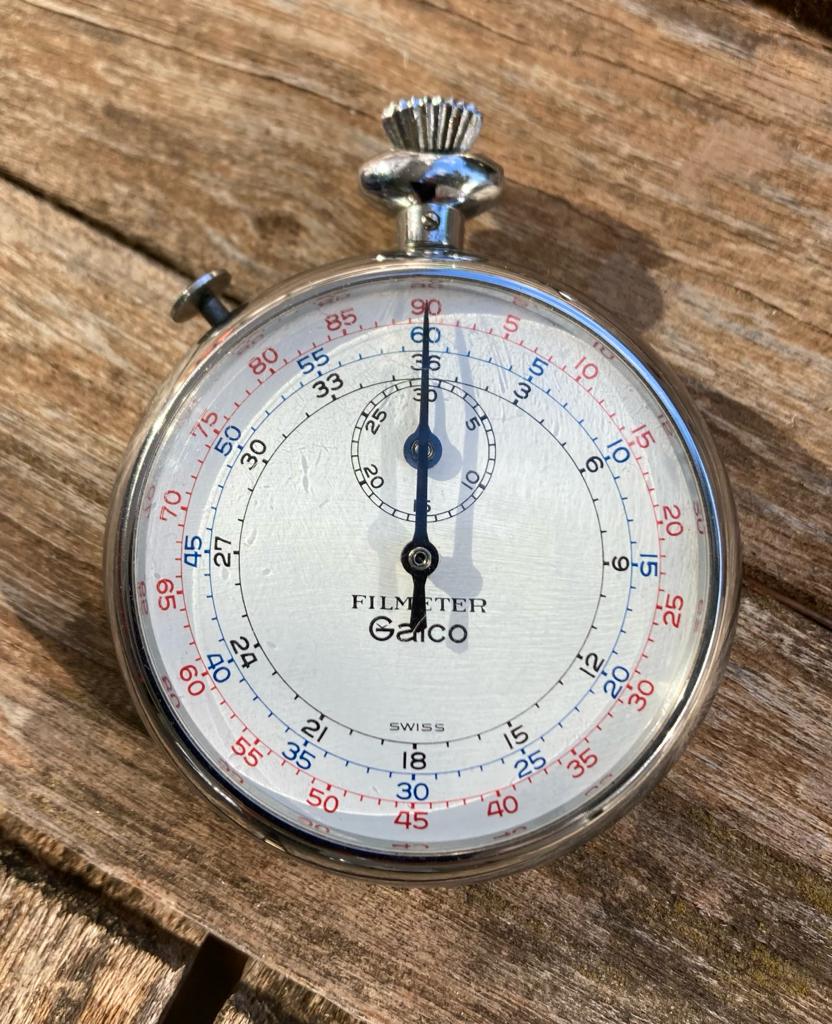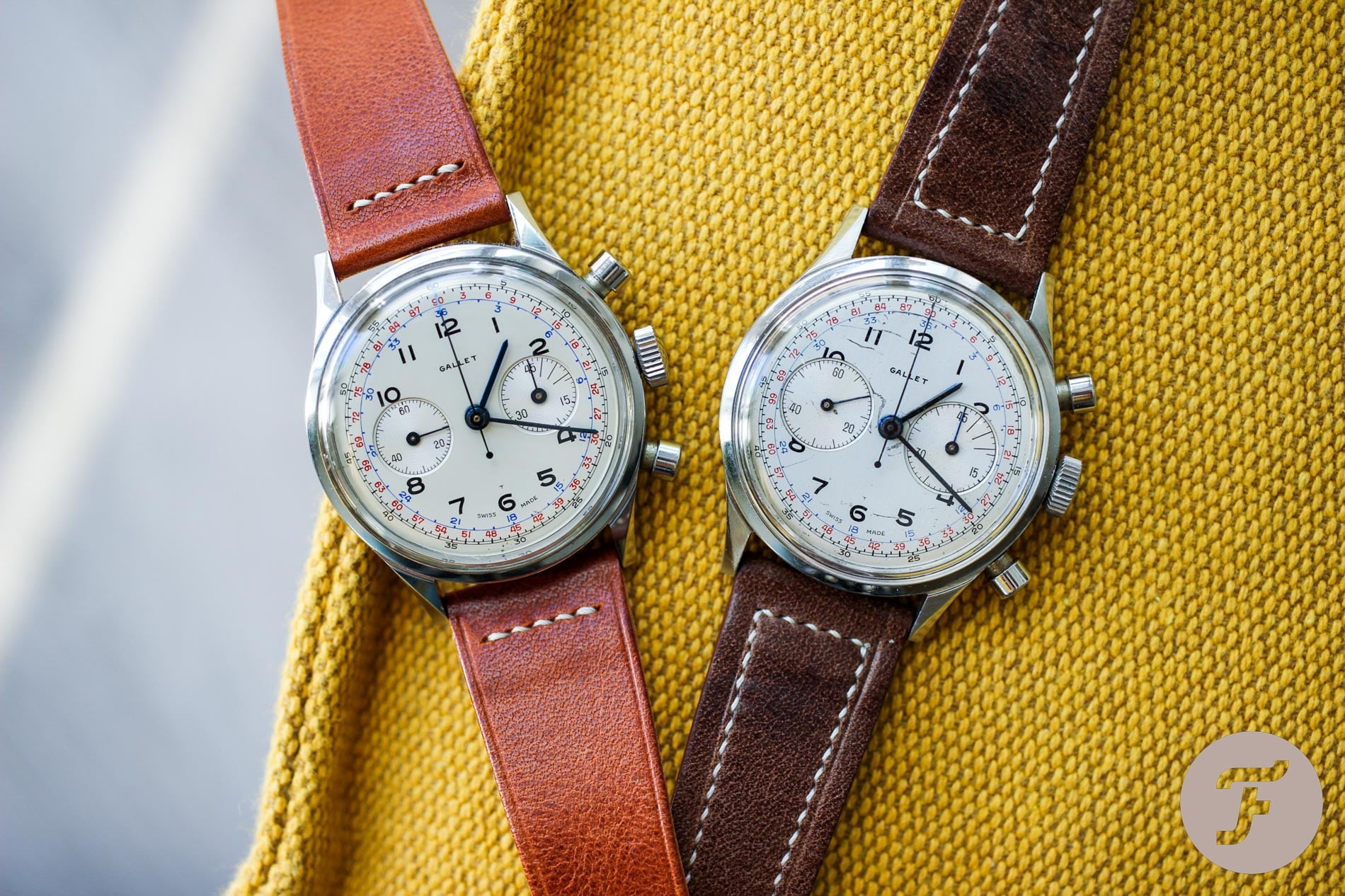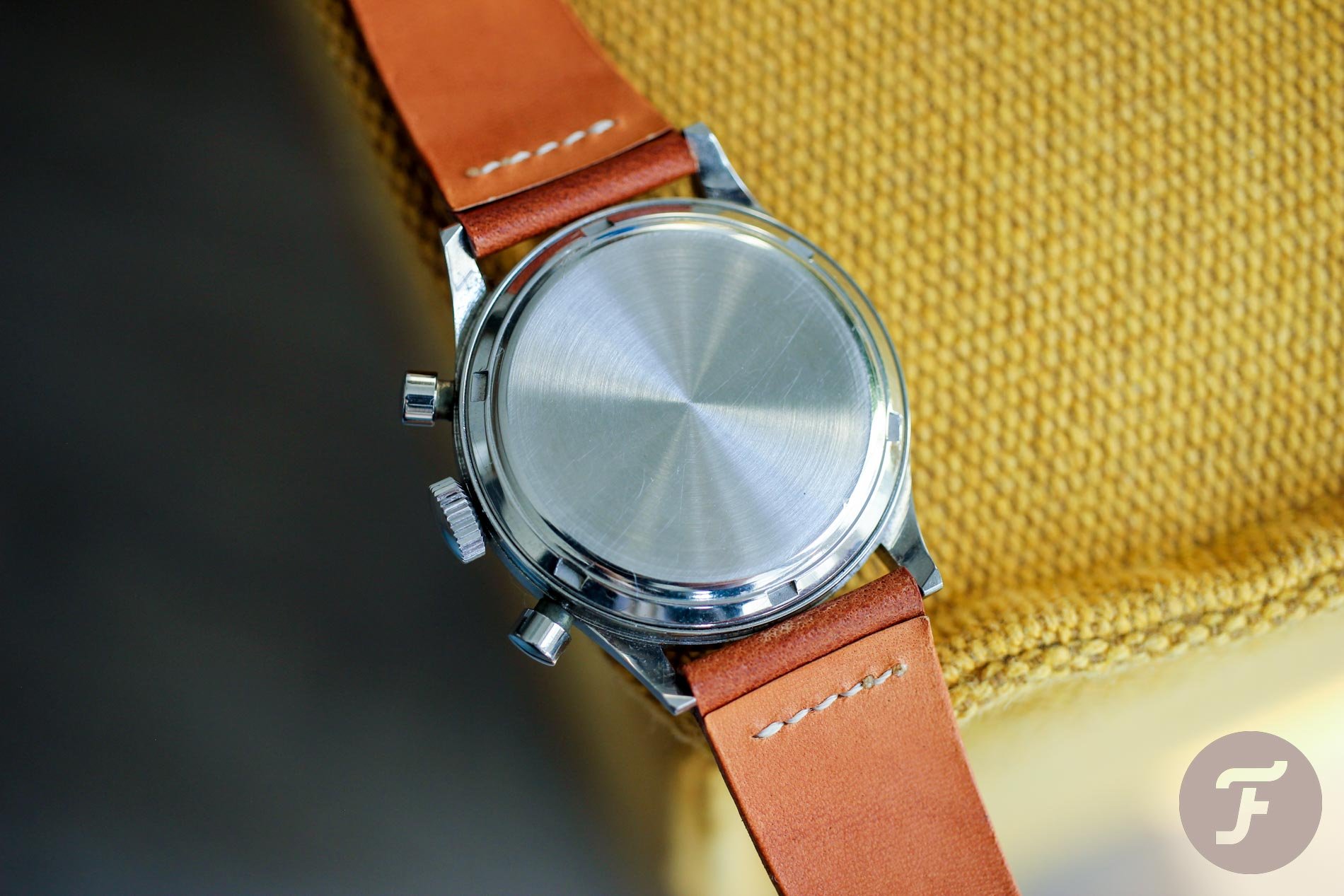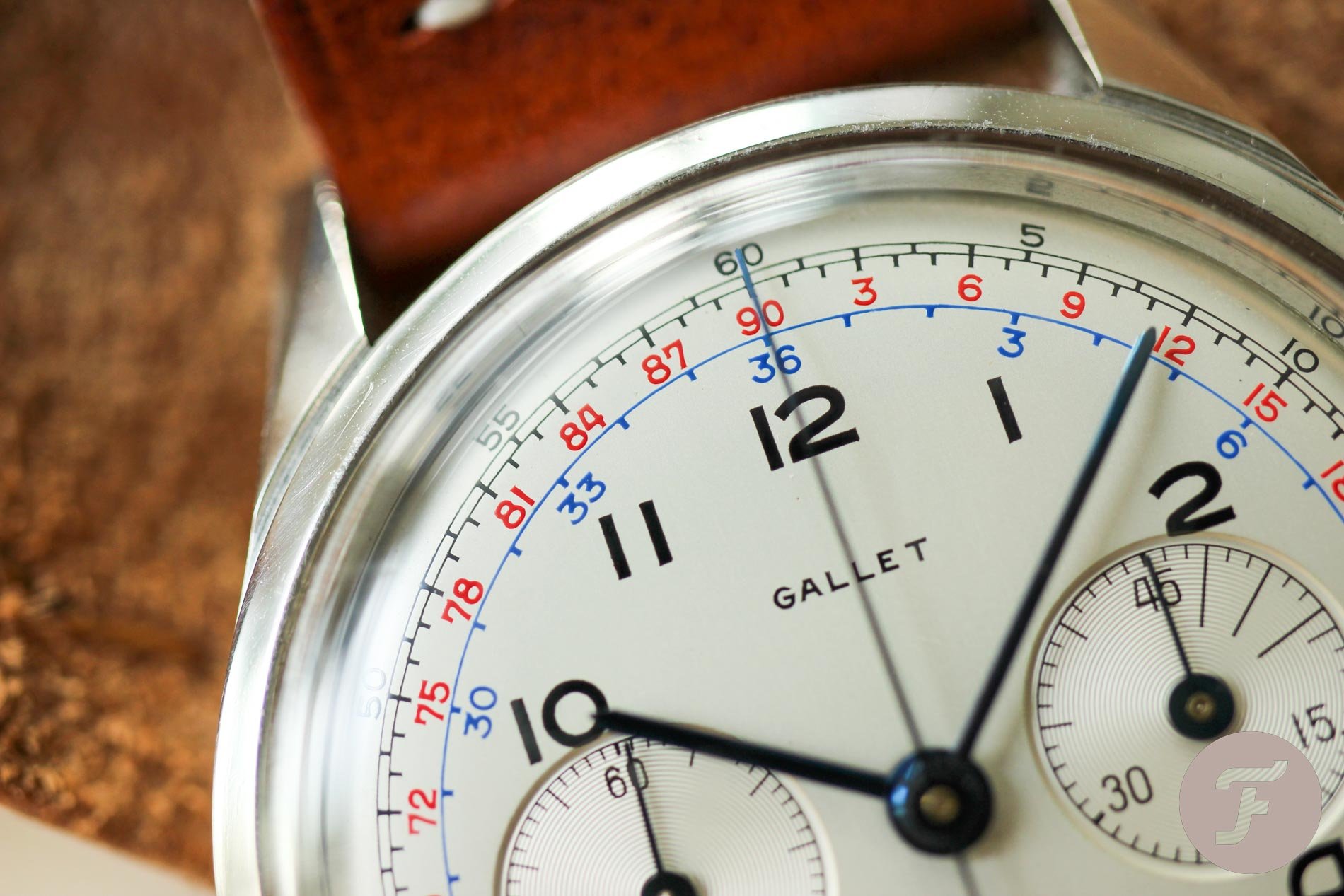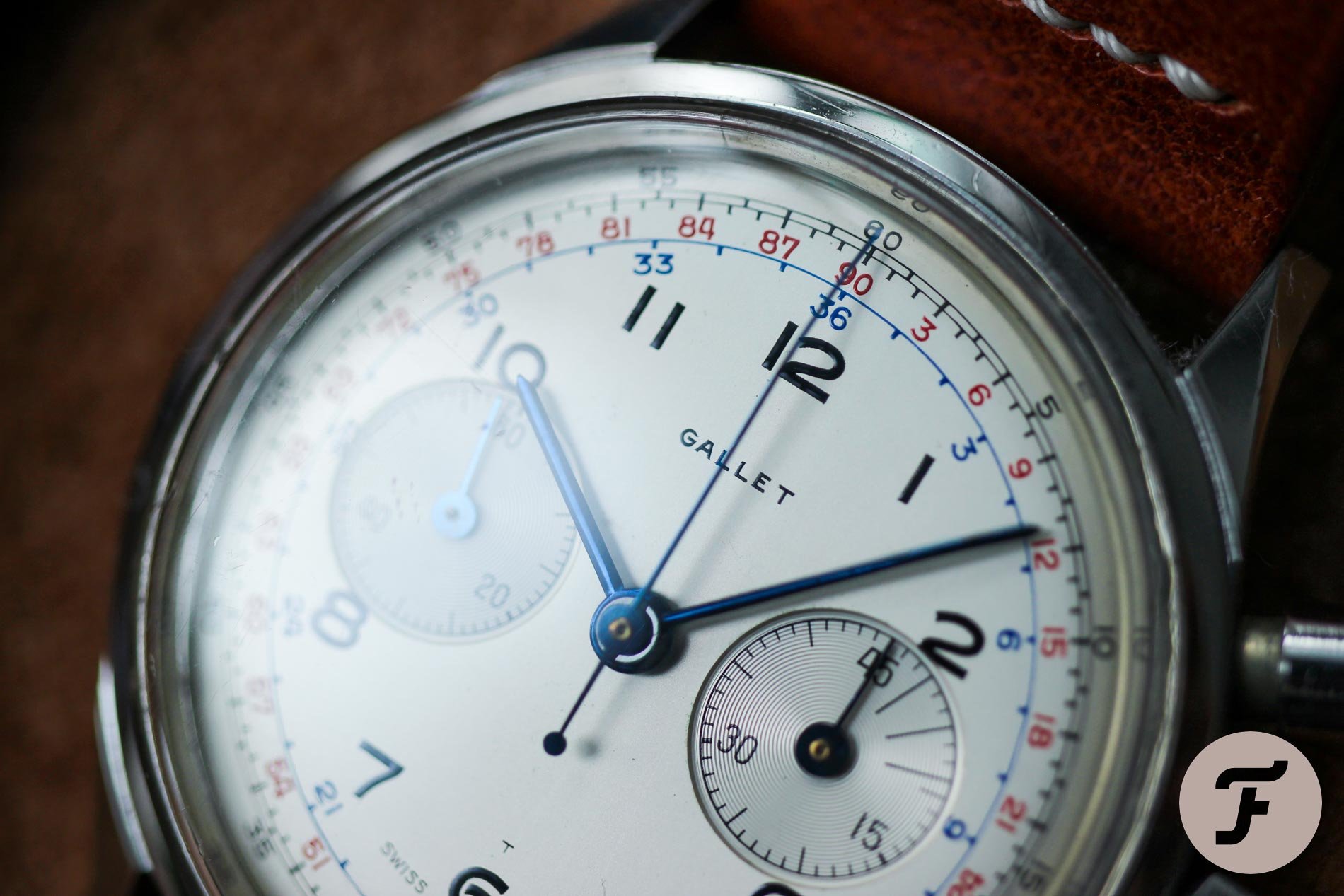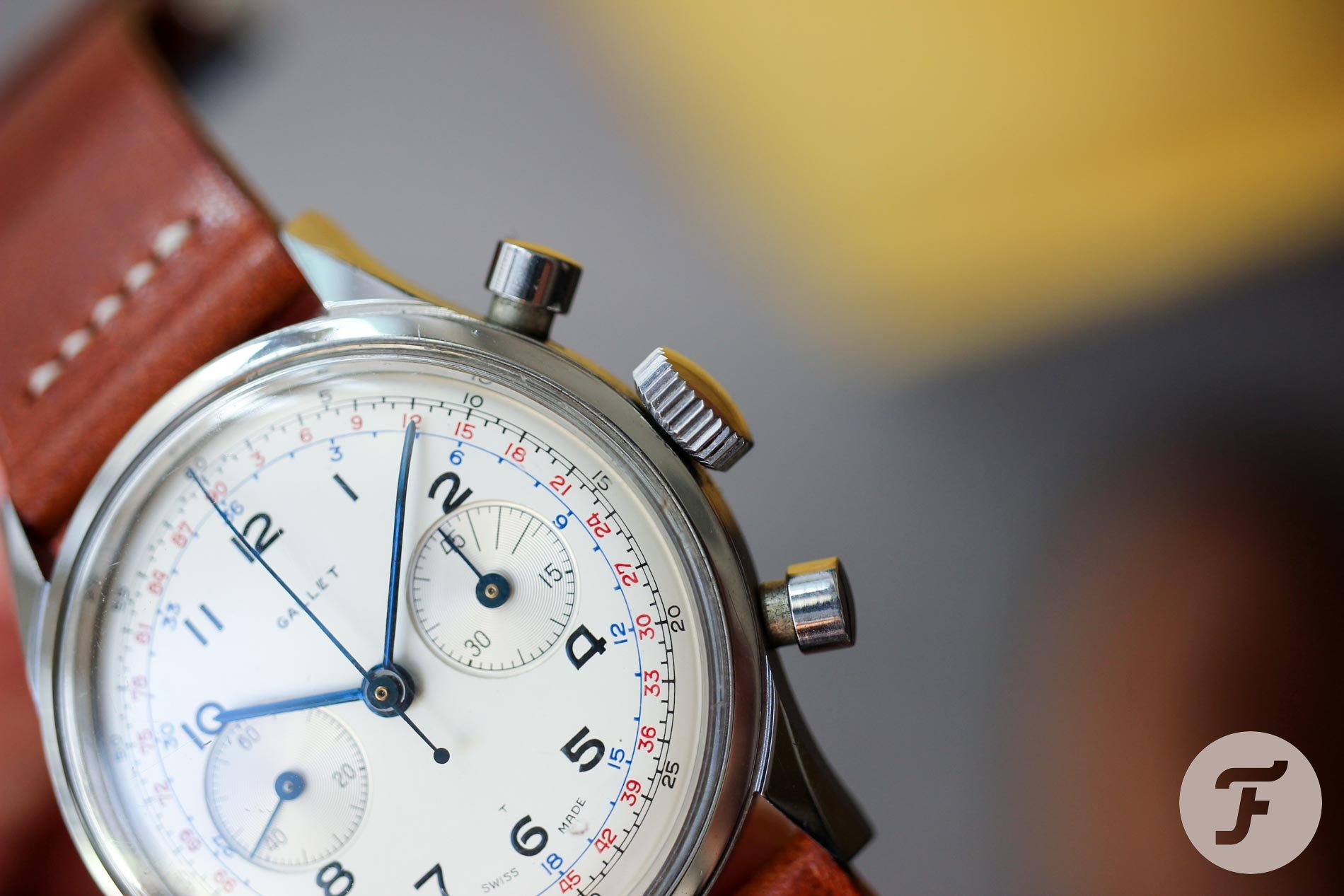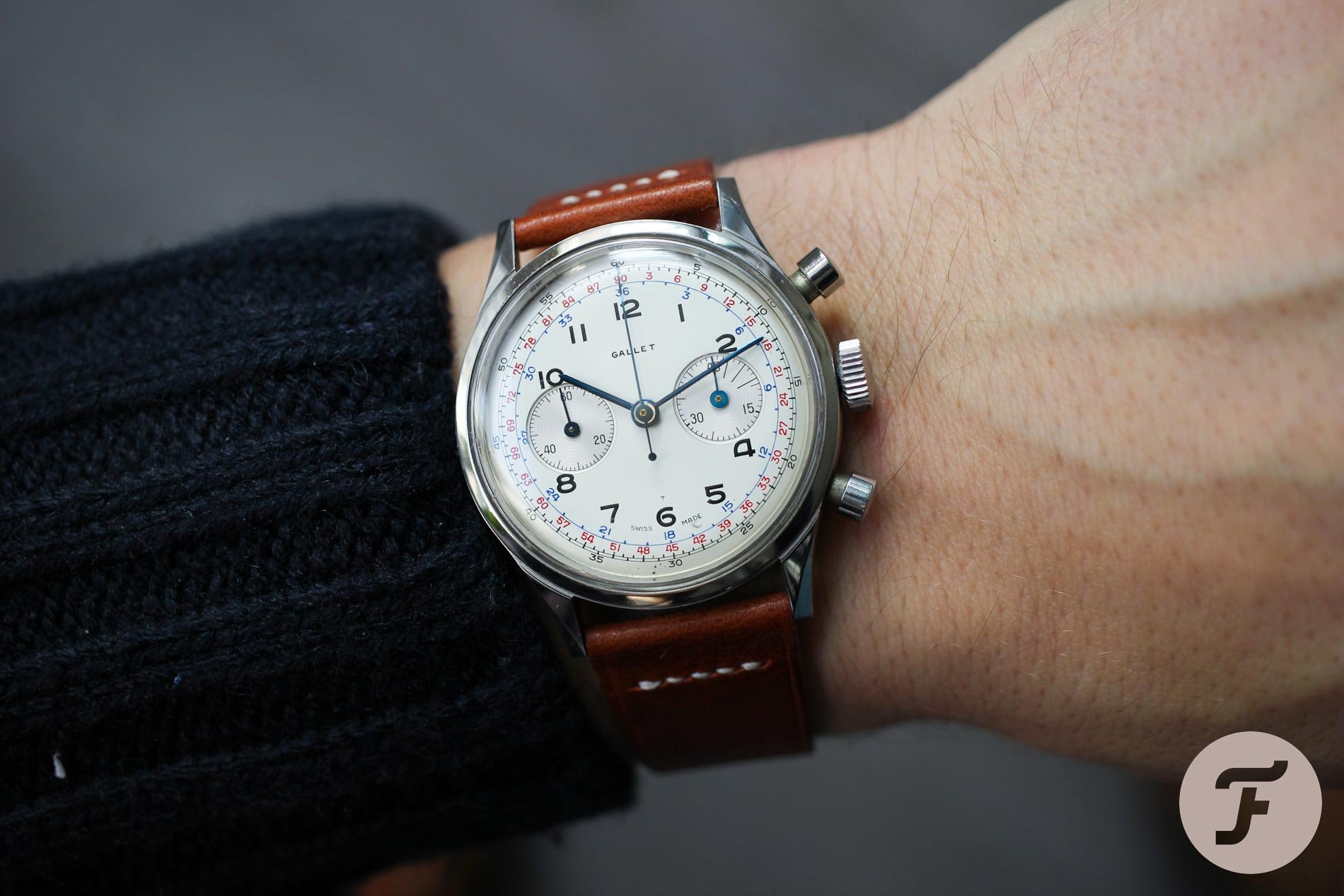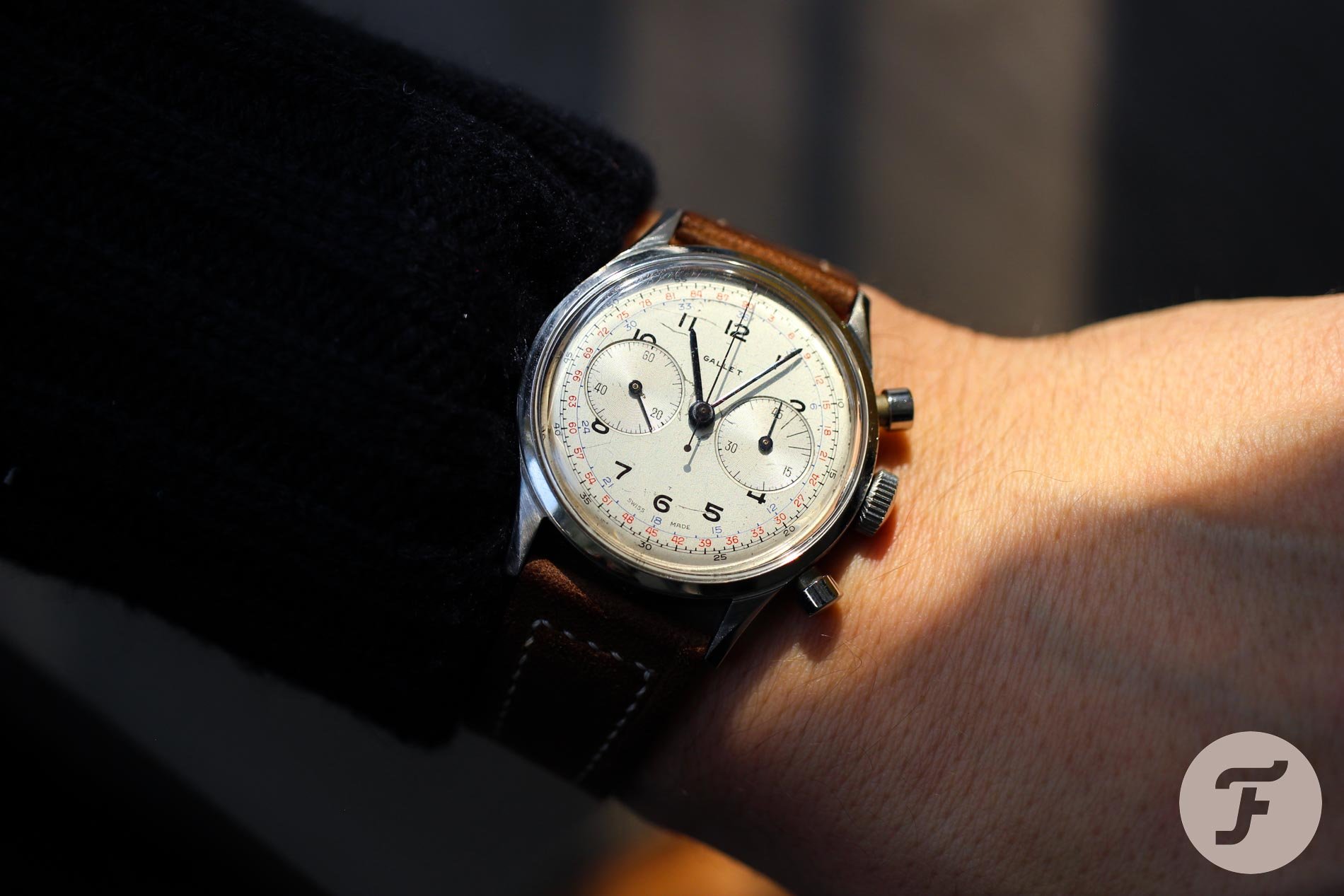#TBT Reliving My Days On Set With The Gallet Filmeter
Grail alert! If you want a genuinely out-of-the-box classic vintage chronograph with a fine movement, you might put the Gallet Filmeter on your watch list.
Ah, the great irony of grail-watch hunting… You haven’t seen the watch resurface at all for four or five years. Crawlers are set on all sites (im)possible, but all you get is nothing. And then, within a few months’ time, two of them pop up?! Well, usually, I would be happy to score just one of them. This time, I got super lucky because I managed to land both.
Gallet Filmeter #1
The first one I landed is the shiny, minty, and crispy example with a dial as smooth as my year-old son’s skin. It was listed on eBay by Jewelry & Coin Buyers, but unfortunately, they had no records about the previous owners. It was quite a battle, but I was determined to get it no matter what. That included setting an alarm to join the midnight auction… and — hold your beer — paying over $9,000.
Gallet Filmeter #2
It wasn’t more than half a year later when eBay decided to surprise me again. Another example of a Filmeter was listed, this time with a bit of “tired dial” and bigger sub-registers. I wasn’t even following the auction as I didn’t feel like spending that much again on a watch I already had. It was a pure accident that I was up late at night when an eBay push notification popped on my phone. I opened eBay, and I was surprised to see that the price was sitting just above $1,000 minutes before the end of the auction. With the expectation to lose, I put in my lowball bid, and bingo, it worked! I scored the second Gallet Filmeter for just a tenth of the price of the first one. I am keeping it in case I need something special to trade for another grail watch.
Why does the Filmeter watch matter?
Rarer and low-production chronograph models are often the ones that are most collectible and sought-after. Almost four years ago, Sacha Davidoff wrote an exciting story about the Universal Genève Film Compax ref. 22522, “…a grail in the UG sphere of collecting with only seven examples that have surfaced to date.” He also said that the Film Compax was the only wristwatch chronograph that he knew of “made and intended purely for cinematographic purposes.” Well, it seems there is another one.
How it works
The Gallet Filmeter works exactly as Sacha explained for the UG. There is a unique scale on the dial with bicolor numeric printing on the inner and outer sides to indicate the amount of film tape used in feet per second. The red scale is calibrated for 35mm film and the blue one for the 16mm size. As Sacha said, “For instance, it would take 40 seconds to use 24 feet of 16mm film, but only 16 seconds using 35mm film.” The UG Film Compax is special because it has the third totalizer for hours. Also, on top of the minute counter, it measures increments of feet per minute for both film types.
Why the Gallet Filmeter matters to me
First of all, it’s one of the scarcest Gallet watches, and I have a real sweet spot for the brand. Secondly, I never aspired to work in the Mecca of the film industry, but I did my bit when I was in charge of conceptualizing TV commercials during my advertising career. To be on set and watch the professional crew bringing my idea to life was always a great and memorable experience. I will never use the “filming” complication, but the Gallet Filmeter reminds me of the many exciting days I had on set.
- Image source: @tucayjordan
- Image source: @tucayjordan
- Image source: @tucayjordan
Dating the “Film” Chronograph
David Laurence from Gallet says that the Filmeter was first introduced in the 1940s as a stopwatch before it became a MultiChron wrist chronograph. To help date the wristwatch reincarnation more precisely, I reached out to my friend Pedro, who has a vast knowledge of fine Gallet chronographs, including his own archive that he has been building for decades. Pedro says that the “modern” version of the Filmeter was first introduced in the 1973 catalog (printed in 1972) as a Gallet “Film” Chronograph. What’s really interesting to learn is that the Gallet Filmeter “appears only in this specific 1973 catalog, not in previous or later catalogs,” says Pedro.
A highly wearable champion
As I prefer 12-hour chronographs much more, I did not expect the Gallet Filmeter to reach any special position in my random watch rotation. But like the pulsation scale and the decimal scale, the filmeter scale casts some kind of magic spell on me. It’s so unusual and novel that it makes the watch highly attractive. When red and blue printing combines with an almost-perfect, shiny pearl-white dial, it makes for the ultimate combination. Looking at the condition of the dial right now, it looks like it left the factory five days ago, not five decades ago.
My big-eyed Gallet Filmeter
The dial on this version is a bit more matte and silvery. In comparison to the small-register version, this Gallet Filmeter is way more subtle. The darker dial and slightly thinner printing on the filmeter scales make it a slightly less appealing model to me. It’s the “same” watch, but so different. The first one gets all the eyes, while the second one barely gets noticed when it enters the room. When it came to me, it needed the correct central seconds hand. I got one from another donor Gallet chronograph. The case, pushers, and crown are the same and correct on both watches. So is the fine Excelsior Park 4-68, which is a true pleasure to operate.
Last thoughts
Next year, we will celebrate 50 years of the Gallet Filmeter’s introduction as a wristwatch. We already know there were Gallet Filmeter chronographs available with rectangular pushers, gold cases, or lumed hands and dials. I am already gathering all the data available. I want to do what Sacha did for UG Film Compax and try to document all the surviving pieces. Thinking out loud, I will hopefully get it completed and publish it in 2023. If you know of any Gallet Filmeter watches out there, please drop me an email at [email protected]. Happy hunting!

